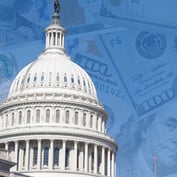The Secure 2.0 Act made significant changes to the current saver’s credit, which provides a nonrefundable tax credit for certain lower-income taxpayers who make contributions to their tax-preferred retirement plans.
Starting in 2027, the existing saver’s credit will be replaced by a 50% matching contribution from the federal government, deposited into existing 401(k)s and IRAs. That match will be limited to $2,000 and will also be phased out based on income levels similar to those that apply to determine qualification for the existing tax credit.
We asked two professors and authors of ALM’s Tax Facts with opposing political viewpoints to share their opinions about the changes to the saver’s credit.
Below is a summary of the debate that ensued between the two professors.
Their Votes:
 Bloink
Bloink
 Byrnes
Byrnes
Their Reasons:
Bloink: The new matching replacement will provide a much stronger incentive for taxpayers to save for retirement. Rather than having to wait for a tax credit that can only offset existing tax liability, retirement savers will receive a retirement plan contribution regardless of whether they owe taxes at all.
This new match will go a long way toward encouraging a broader group of Americans to save for retirement.
Byrnes: Sure, the saver’s “match” may be more valuable than the previous credit, but are taxpayers going to be able to take advantage of it? Employer-based plans don’t have to accept these government matches — and the amounts can’t be treated as Roth contributions.
Taxpayers who only have an employment-based account or a Roth will have to set up a new account to receive these contributions. What happens to the match if they don’t set up an acceptable or eligible account?
Bloink: While tax credits can provide powerful incentives on many fronts, the saver’s credit is geared toward the lowest-income taxpayers. Many of these individuals don’t owe anything in taxes and thus couldn’t benefit from the old saver’s credit at all.









 April 29, 2024 at 04:09 PM
April 29, 2024 at 04:09 PM











